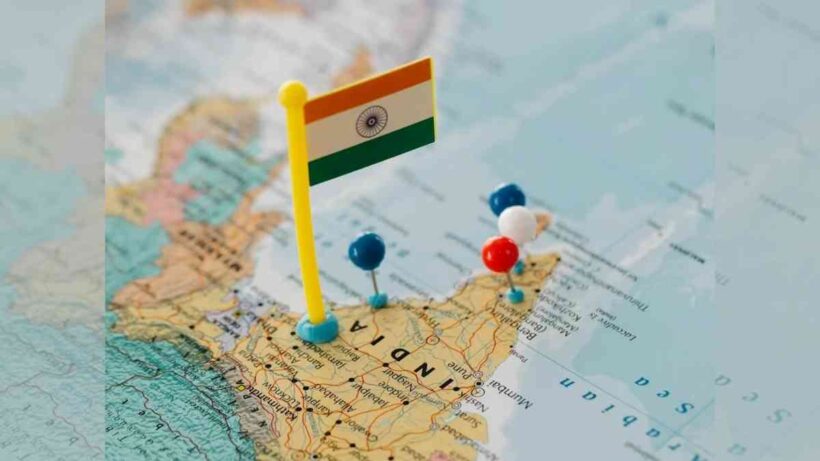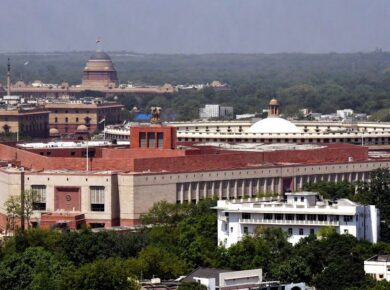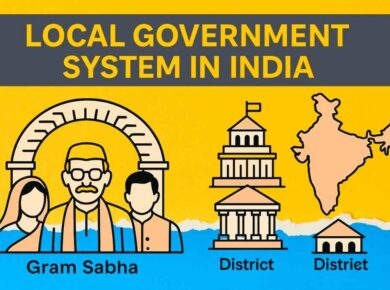Union & its Territories – Formation of States in India
Article 1 of Indian Constitution defines names & territories of nation >> Describes India as union of states (Not federation of states)
Article 2: Admission & establishment of new states >> French settlement of Pondicherry & Portuguese settlement of Goa, Daman & Sikkim
Article 3: Formation of new states & alteration of areas, boundaries & names of existing states (Power vested only in parliament)
- A bill regarding formation of new states / alteration of name or area of existing states is introduced in parliament only on the recommendation of president who shall refer it to state but is not bound to act upon states views.
- If the said bill is passed by both the houses by simple majority, then after presidential assents it comes into action.
- In case of union territories, it is not even necessary for president to obtain views of legislatures of union territories.
Formation of States in India
On 26th Jan 1950, Constitution divided Indian states into four parts
But before this division, Throughout India a constant demand to reorganize the states on linguistic basis arose, hence constituent assembly formed Linguistic Province commission (LPC) to look into the matter (Headed by S.K. Dhar) – June 1948
LPC headed by Dhar supported reorganization on the basis of administrative convenience rather than on Linguistic basis.
In Dec, 1948 a second LPC was formed to again verify the report given by Dhar & look into the matter again >>> Members (J.L. Nehru, Vallabh Bhai Patel & Pattabhi sitaramayya) >>> Gave the same report as given by Dhar, hence on 26th Jan, 1950 division took place as mentioned above.
Oct, 1953 >> Formation of 1st linguistic State, ANDHRA PRADESH
Cause: Death of Potti Sriramulu due to 56 days hunger strike for separation of Telegu speaking areas from Madras (Tamil speaking people)
States Reorganization Commission (SRC): Dec, 1953
- Commission Members: Fazal Ali (Chairman), H.N Kunzru, K.M Pannakar
- Abolition of 4 fold classification of states
- Recommended creation of 16 states & 3 centrally administered territories
States Reorganization Act: 1956 (7th Amendment): Formation of 14 states and 6 union territories took place
Formation of States till 2014
An opening was through to make more states in India as per the needs of the situation, but only after the decision of parliament.
This led to formation of a number of new states in India as shown below:
- Bombay reorganization act, 1960 : Formation of Gujrat
- State of Nagaland act, 1962 : Nagaland as separated state from Assam
- Punjab reorganization act, 1966 : Formation of Haryana
- New state of Himachal Pradesh act , 1970
- North eastern reorganization act, 1971 : Formation of Manipur, Tripura, Meghalaya, Mizoram & Union territories of Arunachal Pradesh & Mizoram
- New state of Sikkim act , 1975
- State of Arunachal Pradesh Act, State of Mizoram act 1986 : Formation of States of Mizoram & Ar. Pradesh
- State of Goa Act, 1987
- P reorganization act, 2000 : Formation of Chhattisgarh
- P reorganization act, 2000 : Formation of Uttarakhand
- Bihar reorganization act, 2000 : Formation of Jharkhand
- Andhra Pradesh reorganization act, 2014 : Formation of Telangana
For more updates, visit www.iasmania.com. Please share your thoughts and comments.
If you’re passionate about building a successful blogging website, check out this helpful guide at Coding Tag – How to Start a Successful Blog. It offers practical steps and expert tips to kickstart your blogging journey!







1 comment
nice